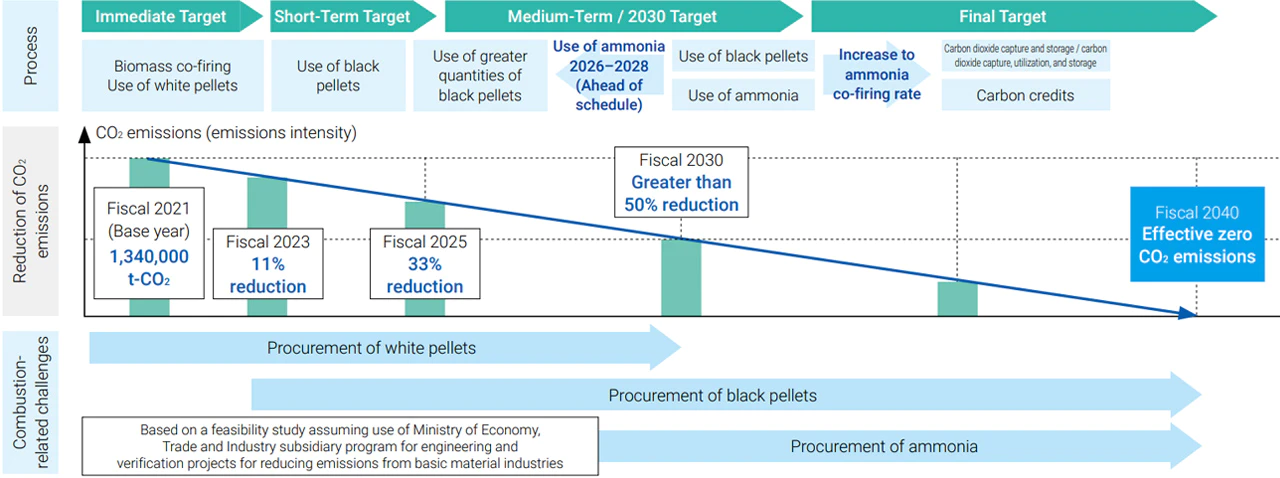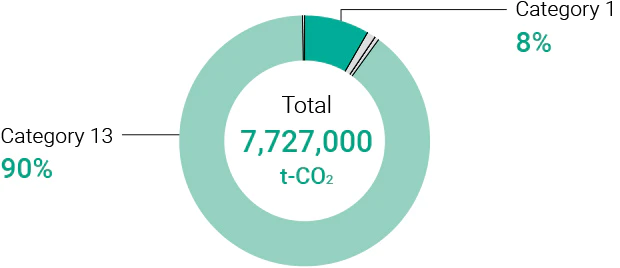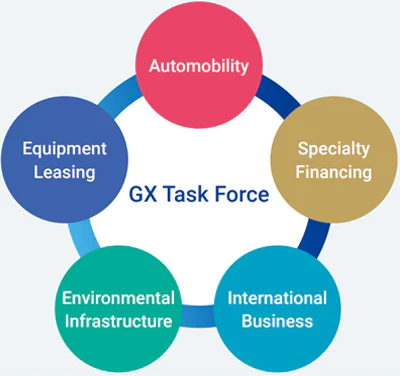INTEGRATED REPORT 2023
BACK NUMBERS
The Tokyo Century Group’s Climate Change Initiatives
ESG STRATEGYImportance of Responding to Climate Change
The Tokyo Century Group’s Management Philosophy calls on us to contribute to the creation of an environmentally sound, sustainable economy and society. We recognize the fight against climate change as an important opportunity for growth toward accomplishing this objective, and a concerted Groupwide response is thus being furnished to address climate change. One of the key issues of Tokyo Century’s materiality is “contribution to decarbonized society,” and we are striving to help resolve social issues while achieving ongoing growth and improvements to corporate value.
In its response toward climate change, the Tokyo Century Group is accelerating reductions to its greenhouse gas emissions. At the same time, we are positioning environment-related businesses as opportunities for growth. By creating businesses and services that contribute to the environment in relation to renewable energy and circular economies, the Group aims to ensure that its services are competitive while increasing the value it provides to customers.
- POINT01
Reduction of greenhouse gas emissions volumes and other measures to address climate change risks
- POINT02
Utilization of growth opportunities to expand environment-related businesses, services, etc.
Greenhouse Gas Emissions and Reduction Targets
For more information, please refer to Tokyo Century’s latest sustainability data book.
Scope 1~2
- POINT 01
Greenhouse Gas Emissions (thousands of t-CO2)

- *1Location standard
Reduction Targets*2
Fiscal 2030: 50% reduction
Fiscal 2040: Net-zero emissions
- *2Reduction in comparison with base amount (1,365,000 t-CO2) calculated by combining fiscal 2021 emissions with estimated annual emissions associated with biomass co-firing power plant of Shunan Power Corporation and hotel business
Scope 1 and Scope 2 Emissions Reduction Initiatives
- POINT 01
Direct Emissions and Indirect Emissions Originating from Energy Use
To reduce direct emissions, Tokyo Century is planning a phased shift from gasoline-fueled vehicles to electric vehicles (EVs) and other electrified vehicles for its Company fleet. In addition, gas-powered equipment will be replaced with electric equipment or with equipment that is more energy efficient or more efficient overall while offices will be relocated to buildings that utilize renewable energy. For indirect emissions, we will seek to effectively switch to renewable energy by procuring green power and purchasing certificates verifying that our power does not come from fossil fuels.
Transition Plan for Biomass Co-Firing Power Plant
Approximately 98% of the Tokyo Century Group’s total greenhouse gas emissions are attributable to emissions from its biomass co-firing power plant. Targeting the accomplishment of net-zero greenhouse gas emissions as quickly as possible, with the goal of fiscal 2040, we have formulated a transition road map, which has received third-party verification.*3 Measures are currently underway based on this road map.
- *3Verification by Japan Credit Rating Agency, Ltd.
Transition Road Map for Biomass Co-Firing Power Plant

POINT
Tokyo Century will increase the biomass co-firing rate at its newly operational plant while adopting black pellets, which feature high combustion efficiency, prefaced on assumptions of future technological developments. At the same time, we will transition to the burning of ammonia, which does not emit greenhouse gas emissions.
- *For more information on the transition road map, please click here.
Scope 3
- POINT 01
Greenhouse Gas Emissions (thousands of t-CO2)

Future Directives
Expansion of scope of calculation, refinement of calculation methods, and promotion of initiatives for reducing greenhouse gas emissions
Greenhouse Gas Emissions by Scope 3 Category (thousands of t-CO2)

Scope of Calculation
Category 1: Purchased goods and services
Category 2: Capital goods
Category 3: Fuel- and energyrelated activities
Category 4: Upstream transportation and distribution
Category 5: Waste generated in operations
Category 6: Business travel
Category 7: Employee commuting
Category 11: Use of sold products
Category 12: End-of-life treatment of sold products
Category 13: Downstream leased assets
Category 15: Investments
Emissions Reduction Initiatives
- POINT 01
- POINT 02
Introduction of Highly Fuel-Efficient, New Technology Aircraft in Aviation Business
Aviation Capital Group LLC (ACG), an aircraft leasing subsidiary, and other aviation business companies are pursuing reductions in greenhouse gas emissions by introducing into their fleets new technology aircraft with high levels of fuel efficiency. The A320neo, a mainstay aircraft of Airbus SE, offers a 20% reduction in greenhouse gas emissions compared with prior aircraft. The Tokyo Century Group is committed to increasing the portion of its aircraft portfolio accounted for by such ecofriendly aircraft and thereby reducing greenhouse gas emissions. Another pressing task in reducing the emissions of the aviation industry is the shift toward sustainable aviation fuel. Recognizing the business opportunity this shift represents, we are assessing how we can act to take advantage of this opportunity.
Ratio of New Technology Aircraft among the Tokyo Century Group’s Fleet

Expansion of EV Offerings and Entry into EV Battery Business in Auto Leasing and Car Rental Businesses
- Provision of EVs to the NTT Group, in light of declared commitment to transition completely to EVs (participation in EV100 initiative), and promotion of EV adoption by other customers
- Commencement of transactions of electric taxis and buses and other electrified micro-mobility options
- Enhancement of value chain to provide EV-related services
Adoption of Renewable Energy in Real Estate Business
- Adoption of electricity sourced from renewable energy
- Installation of solar panels on Company-owned properties
- Notes:
- 1.For more information on calculation methods and other details, please refer to Tokyo Century’s latest sustainability data book.
- 2.To view the environmental, social, and governance report of Aviation Capital Group, please click here.
Promotion of greenhouse gas emissions reduction initiatives to develop businesses and services that contribute to the resolution of social issues and to improve customer value proposition

Formation of GX Task Force
- POINT 02
The Tokyo Century Group recognizes the need for a concerted approach toward green transformation (GX) if it is to achieve its goal of carbon neutrality while also expanding and enhancing the range of environment-related services it supplies to customers.
Based on this recognition as well as the necessity of cross-organizational, cross-Group coordination to create new businesses, we formed the GX Task Force in April 2023. This task force is charged with sharing expertise and knowledge among operating segments and facilitating a unified approach toward customers.